In the meadows and fields of various regions, a golden bloom emerges, catching the eye and capturing the imagination. This remarkable flower, known as John’s Wort (Hypericum perforatum), has a long history of traditional use and is celebrated for its beauty and medicinal properties. Join us as we explore the captivating world of John’s Wort flower, uncovering its appearance, historical significance, and therapeutic potential.
John’s Wort flower images

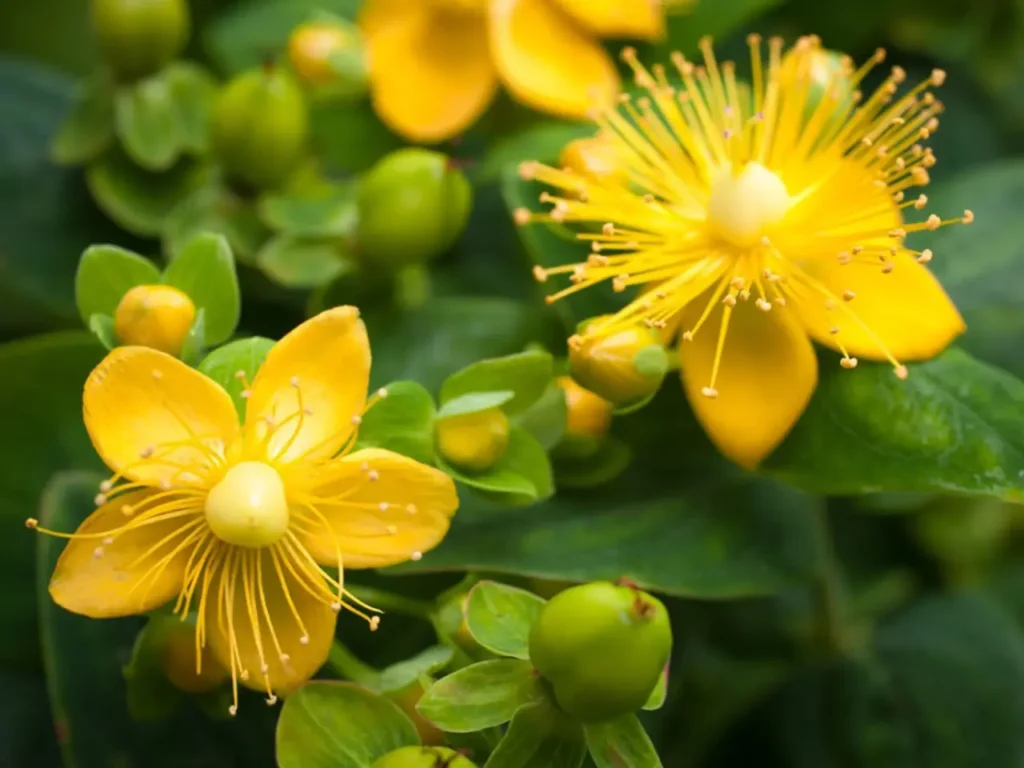
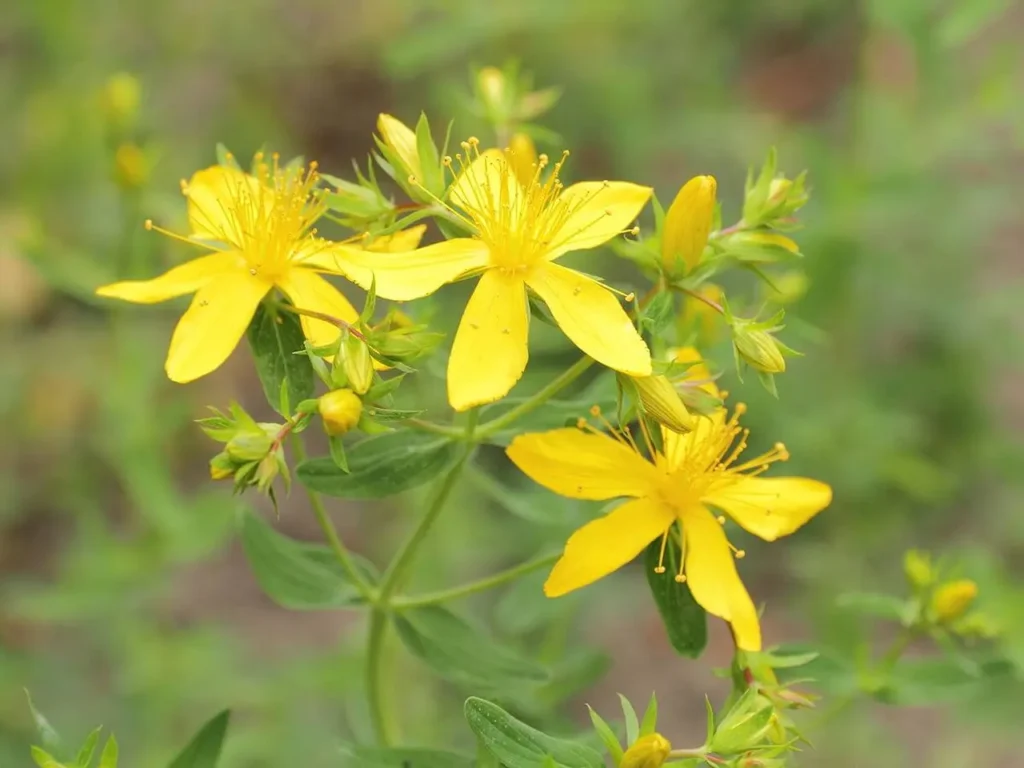
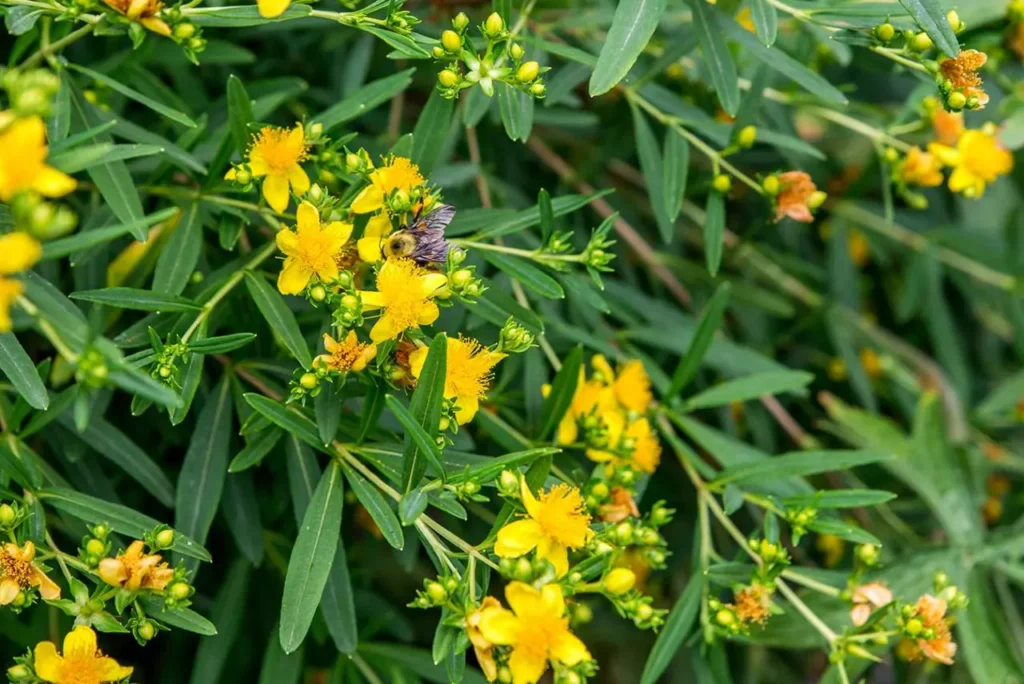
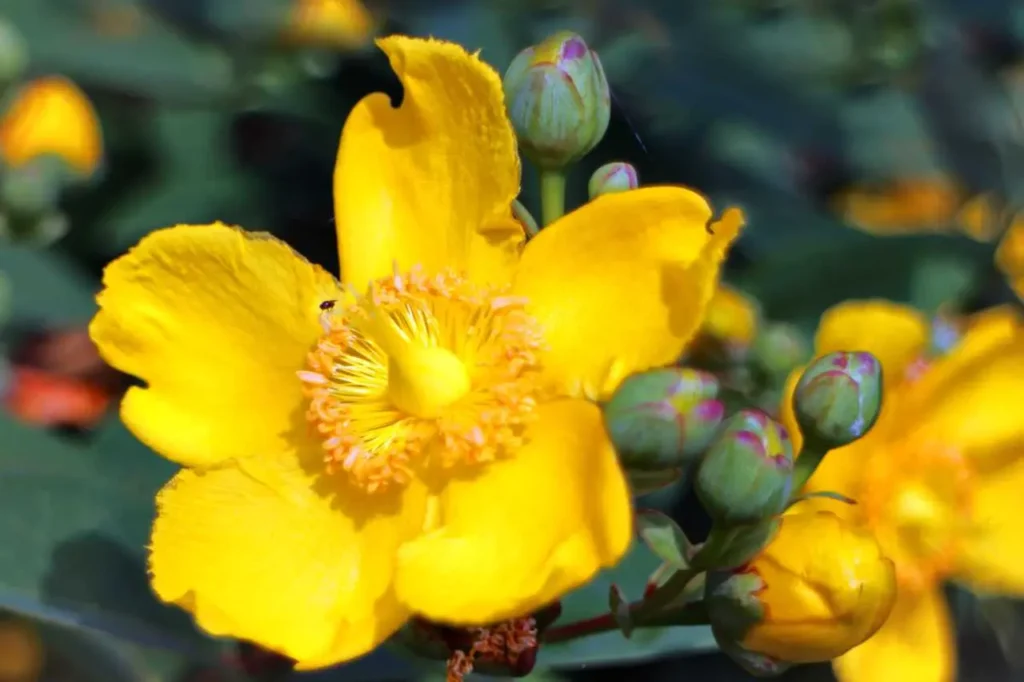
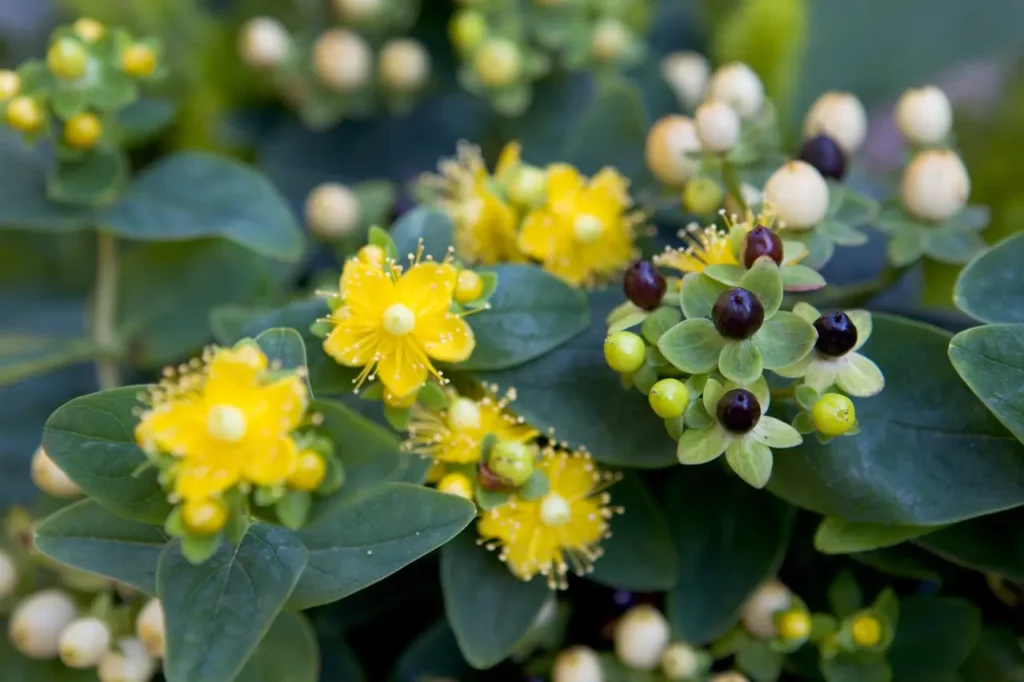
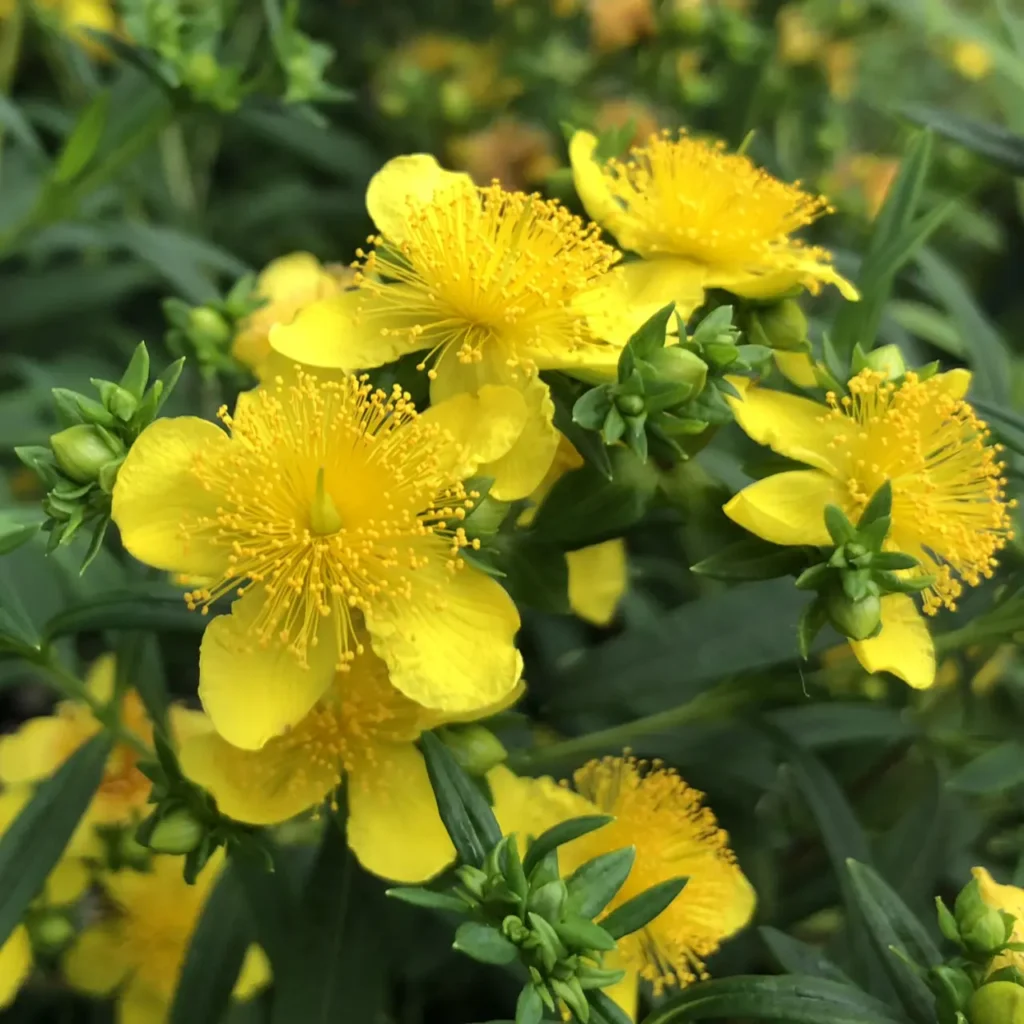
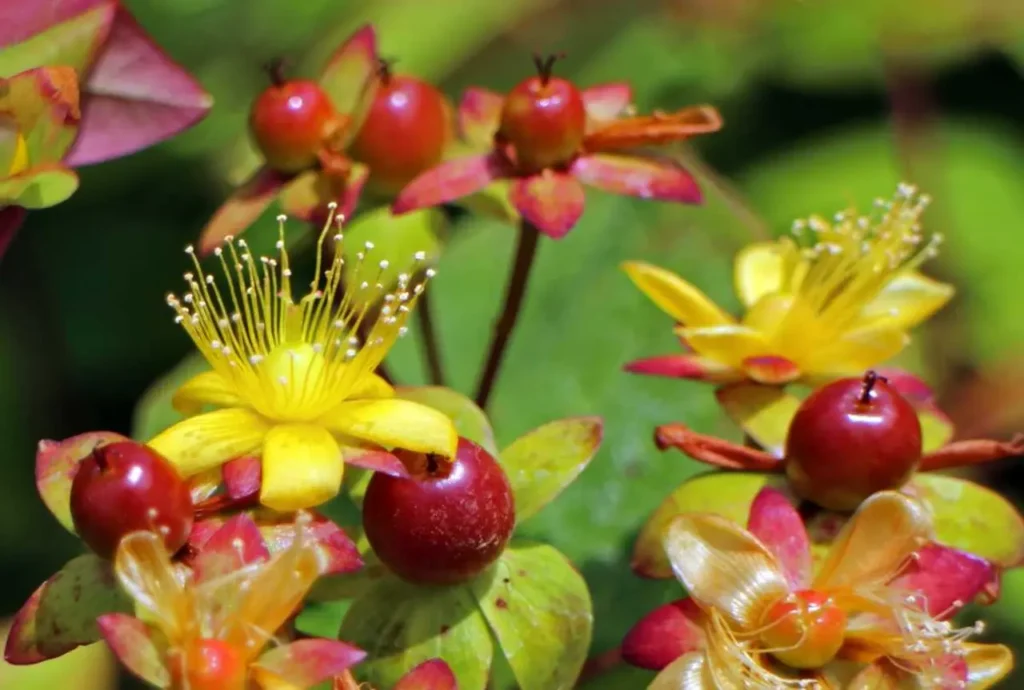
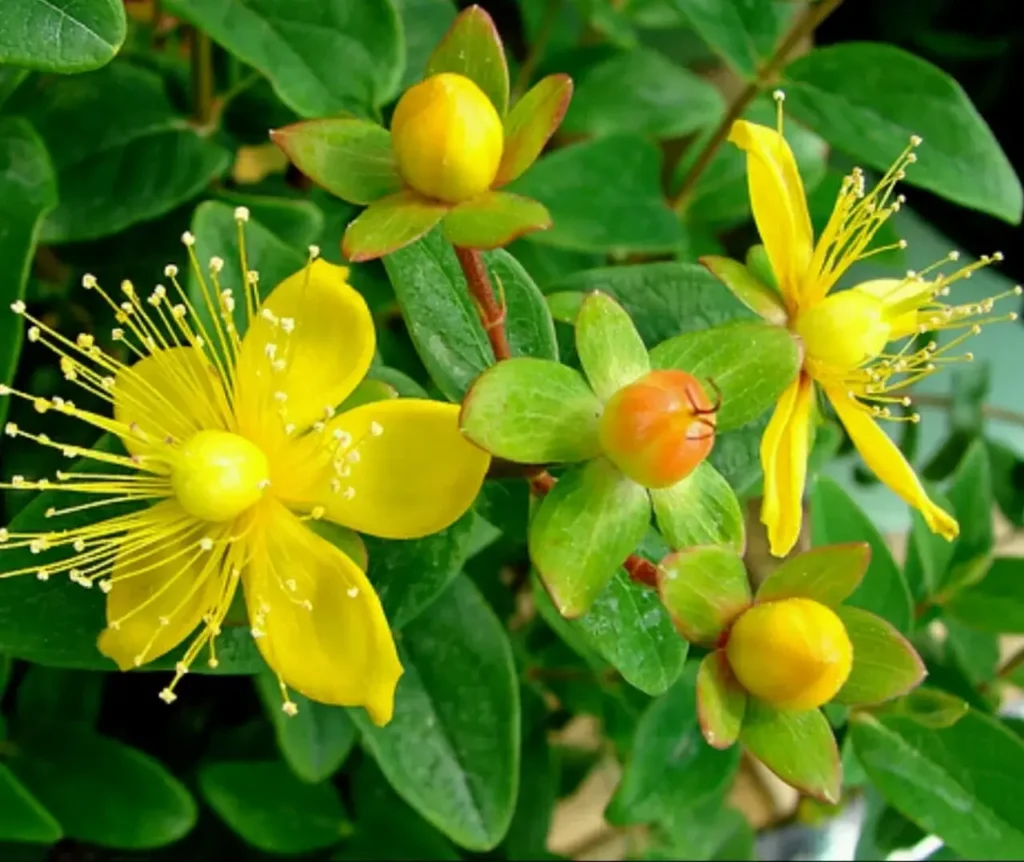
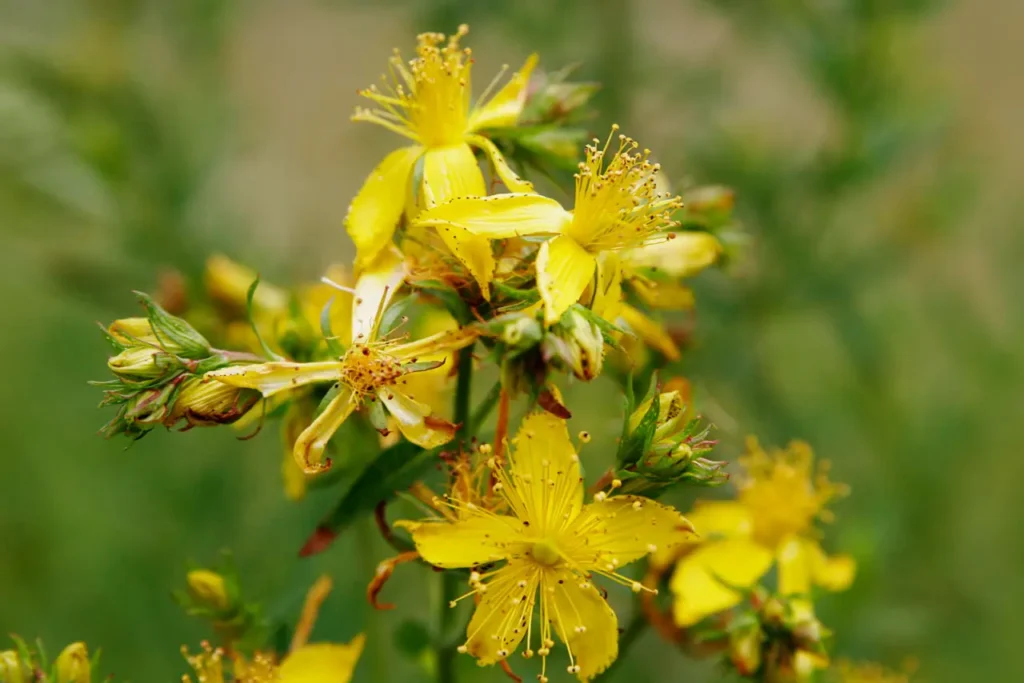
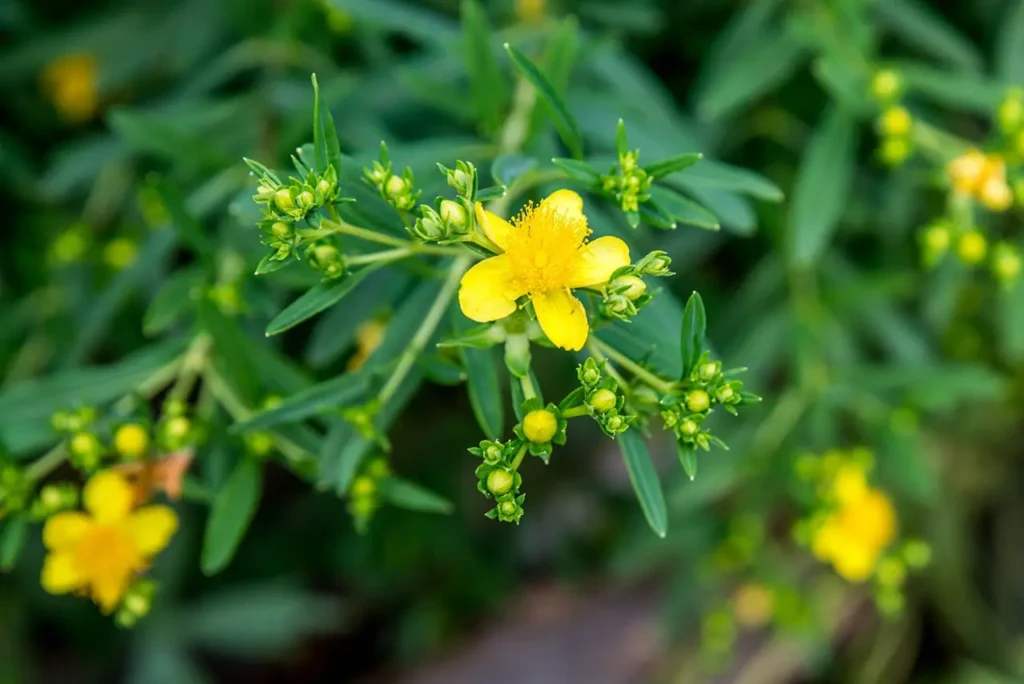
Appearance and Habitat
John’s Wort is a perennial herbaceous plant that features delicate, star-shaped yellow flowers with prominent stamens and petals that appear to be dotted with translucent glands. The blossoms, measuring approximately 2 to 3 centimeters in diameter, form clusters atop the plant’s branching stems. The plant itself can grow up to one meter in height and is characterized by oblong, opposite leaves that bear tiny oil glands.
Native to Europe, John’s Wort has also spread to other temperate regions around the world, including North America, Asia, and Australia. It thrives in a variety of habitats, including open fields, meadows, and roadsides, often favoring sunny locations.
Historical Significance and Folklore
John’s Wort has a rich history of cultural and medicinal use. Its name is derived from the fact that it often flowers around St. John’s Day on June 24th, a significant date in Christian tradition. In ancient times, the plant was associated with midsummer festivals and was believed to have protective properties against evil spirits and negative energies.
Throughout history, John’s Wort has been revered for its medicinal properties. It has been mentioned in traditional herbal practices of different cultures, including ancient Greek, Roman, and traditional Chinese medicine. It was believed to possess a wide range of healing properties, and various parts of the plant, including the flowers, leaves, and stem, were used in remedies.
Therapeutic Potential and Modern Uses
John’s Wort is widely recognized for its potential as a natural remedy for a range of ailments. The flowers, in particular, contain numerous biologically active compounds, including hypericin, hyperforin, and flavonoids, which are believed to contribute to its therapeutic effects.
The plant has been traditionally used to alleviate symptoms of depression, anxiety, and mood disorders. Some studies suggest that certain components of John’s Wort may have a positive impact on the brain’s neurotransmitter levels, potentially influencing mood regulation. However, it is important to note that the use of John’s Wort for these purposes should be approached with caution and under the guidance of a healthcare professional.
Additionally, John’s Wort has been employed as a topical treatment for wounds, burns, and skin conditions due to its anti-inflammatory and antimicrobial properties. Infused oils and extracts derived from the flowers have been used to soothe and heal skin irritations, including minor cuts and bruises.
Caution and Considerations
While John’s Wort has gained popularity as a natural remedy, it is essential to exercise caution when using it. Like any medicinal herb, it may interact with certain medications, including antidepressants, birth control pills, and blood-thinning drugs. It is crucial to consult a healthcare professional before incorporating John’s Wort into your healthcare regimen, especially if you are taking any prescription medications.
John’s Wort flower, with its radiant beauty and medicinal properties, continues to captivate and inspire. From its historical significance to its potential therapeutic benefits, this golden blossom has left an indelible mark on human culture and traditional healing practices. Whether admired for its ornamental value or explored for its therapeutic potential, John’s Wort serves as a reminder of the profound connection between nature and our well-being.








